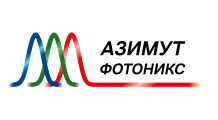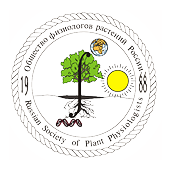Новости науки и практики // Декабрь 2021

Phosphatidic acid modulates MPK3- and MPK6-mediated hypoxia signaling in Arabidopsis
Zhou et al. showed that in Arabidopsis, loss of the phospholipase D (PLD) proteins PLDα1 and PLDδ leads to hypersensitivity to hypoxia, but increased tolerance to submergence. This enhanced tolerance is likely due to improvement of PA-mediated membrane integrity. PA bound to the Mitogen-Activated Protein Kinases MPK3 and MPK6 in vitro and contributed to hypoxia-induced phosphorylation of MPK3 and MPK6 in vivo. Moreover, mpk3 and mpk6 mutants were more sensitive to hypoxia and submergence stress compared with wild type, and fully suppressed the submergence-tolerant phenotypes of pldα1 and pldδ mutants.
https://academic.oup.com/plcell/advance-article/doi/10.1093/plcell/koab289/6446039?login=true
Keeping plant hormone levels in check
A team of researchers led by Bert De Rybel (VIB-UGent Center for Plant Systems Biology) discovers that a single transcriptional complex, called TMO5/LHW, coordinates vascular development in the plant root meristem by controlling cytokinin levels in space and time. Based on these insights, targeted modulation of specific tissue types in plant roots could lead to more efficient water usage and promote drought resistance.
https://www.nature.com/articles/s41477-021-01017-6
Control of Arabidopsis shoot stem cell homeostasis by two antagonistic CLE peptide signalling pathways
Schlegel et al. show that the CLE40 gene, encoding a secreted peptide closely related to CLV3, is expressed in the SAM in differentiating cells in a pattern complementary to that of CLV3. CLE40 promotes WUS expression via BAM1, a CLV1-family receptor, and CLE40 expression is in turn repressed in a WUS-dependent manner. Together, CLE40-BAM1-WUS establish a second negative feedback loop. They propose that stem cell homeostasis is achieved through two intertwined pathways that adjust WUS activity and incorporate information on the size of the stem cell domain, via CLV3-CLV1, and on cell differentiation via CLE40-BAM1.
https://elifesciences.org/articles/70934?utm_campaign=organic&utm_medium=social&utm_source=twitter
Nanoparticle cellular internalization is not required for RNA delivery to mature plant leaves
Zhang et al. employed non-biolistically delivered DNA-modified gold nanoparticles (AuNPs) of various sizes (5–20 nm) and shapes (spheres and rods) to systematically investigate their transport following infiltration into Nicotiana benthamiana leaves. Generally, smaller AuNPs demonstrated more rapid, higher and longer-lasting levels of association with plant cell walls compared with larger AuNPs. They observed internalization of rod-shaped but not spherical AuNPs into plant cells, yet, surprisingly, 10 nm spherical AuNPs functionalized with small-interfering RNA (siRNA) were the most efficient at siRNA delivery and inducing gene silencing in mature plant leaves.
What drives photosynthesis during desiccation? Mosses and other outliers from the photosynthesis–elasticity trade-off
In vascular plants, more rigid leaves have been linked to lower photosynthetic capacity, associated with low CO2 diffusion across the mesophyll, indirectly resulting in a trade-off between photosynthetic capacity (An) and bulk modulus of elasticity (ε). However, Perera-Castro et al. evaluated mosses, liverworts, and Chara sp., plus some lycophytes and ferns, and found that they behaved as clear outliers of the An–ε relationship.
The U1 snRNP component RBP45d regulates temperature-responsive flowering in Arabidopsis
Chang et al. identified the splicing factor RNA BINDING PROTEIN 45d (RBP45d), a member of the RBP45/47 family in Arabidopsis thaliana. Using sequence comparison and biochemical analysis, we determined that RBP45d is a component of the U1 small nuclear ribonucleoprotein (U1 snRNP) with functions distinct from other family members. RBP45d associates with the U1 snRNP by interacting with pre-mRNA-processing factor 39a (PRP39a) and directly regulates alternative splicing (AS) for a specific set of genes. Plants with loss of RBP45d and PRP39a function exhibited defects in temperature-induced flowering, potentially due to the misregulation of temperature-sensitive AS of FLOWERING LOCUS M as well as the accumulation of the flowering repressor FLOWERING LOCUS C.
https://academic.oup.com/plcell/advance-article/doi/10.1093/plcell/koab273/6427653?login=true
Plant computational model explains how leaf veins develop
Polar auxin transport dynamics control vein patterning.
Long‐distance communication through systemic macromolecular signaling mediates stress defense responses in plants
Zhang et al. review the current body of knowledge of the transport pathways and regulatory mechanisms of macromolecules in plants and assess systemic, long-distance signal trafficking that mediates stress responses, and plant–environment or plant–insect community interactions. Additionally, they propose several methods for identifying mobile mRNAs and proteins. Finally, they discuss the challenges facing systemic signaling research and put forth the most urgent questions that need to be answered to advance our understanding of plant systemic signaling.
Functional disruption of cell wall invertase inhibitor by genome editing increases sugar content of tomato fruit without decrease fruit weight
Sugar content is one of the most important quality traits of tomato. Cell wall invertase promotes sucrose unloading in the fruit by maintaining a gradient of sucrose concentration between source leaves and fruits, while invertase inhibitor (INVINH) regulates this process. In this study, knock-out of cell wall INVINH in tomato (SlINVINH1) was performed by genome editing using, CRISPR/Cas9 and Target-AID technologies. Most of the genome-edited lines set higher soluble solid content (SSC) fruit than the original cultivar ‘Suzukoma’, while fruit weight was different among the genome-edited lines. The mature fruits of genome edited line 193–3 showed the highest sugar content, and the fructose and glucose contents were 29% and 36% higher than that of the original cultivar, respectively.
Effective methods for isolation and purification of extracellular vesicles from plants
Huang et al. compare published plant EV isolation methods, and provide our recommended method for the isolation and purification of plant EVs. This method includes a detailed protocol for clean AWF collection from Arabidopsis thaliana leaves, followed by EV isolation via differential centrifugation. To further separate and purify specific subclasses of EVs from heterogeneous vesicle populations, density gradient ultracentrifugation and immunoaffinity capture are then utilized.
New study capture sugar transport fundamental to plants
In plants, Sugar Transport Proteins (STPs) are key for uptake of glucose. They are responsible for sugar import into plant organs such as seeds, pollen and fruit and are essential for correct tissue development. Moreover, controlling sugar uptake through STPs is used by plants as a vital defense strategy against microbial infection, by using starvation and competition for sugar to restrict microbial growth.
https://www.eurekalert.org/news-releases/930391
Storing energy in plants with electronic roots
By watering bean plants (Phaseolus vulgaris) with a solution that contains conjugated oligomers, researchers at the Laboratory of Organic Electronics, Linköping University, Sweden, have shown that the roots of the plant become electrically conducting and can store energy.
https://www.sciencedaily.com/releases/2021/11/211108114838.htm
The root meristem is shaped by brassinosteroid control of cell geometry
Quantification of the three-dimensional geometry of thousands of individual meristematic cells across different tissue types showed that the modulation of BR signalling yields distinct changes in growth rate and anisotropy, which affects the time that cells spend in the meristem and has a strong impact on the final root form. By contrast, the hormone effect on cell volume was minor, establishing cell volume as invariant to the effect of BR. Thus, BR has the highest effect on cell shape and growth anisotropy, regulating the overall longitudinal and radial growth of the meristem, while maintaining a coherent distribution of cell sizes.
https://www.nature.com/articles/s41477-021-01014-9
Pathogen effectors: What do they do at plasmodesmata?
Iswanto et al. summarize and highlight recent advances in the study of plasmodesmata-associated fungal/oomycete/bacterial effectors. We also discuss how pathogen effectors interfere with host defence mechanisms in the context of plasmodesmata regulation.
Новости
Новости науки и практики // Апрель 2024
Обзор научных новостей, опубликованных во всемирной паутине за последний месяцФосфорилирование плазматической мембраны H+-АТФазы Thr881 (треонин) участвует в светоиндуцированном открывании устьиц
Ученые из Университета Нагои (Nagoya University) и Института трансформирующих биомолекул (WPI-ITbM) обнаружили новый ...Научная конференция «Photosynthesis and Hydrogen Energy Research for Sustainability – 2024»
Приглашаем Вас принять участие в XII международной научной конференции


Объявления
Записей не найдено.



